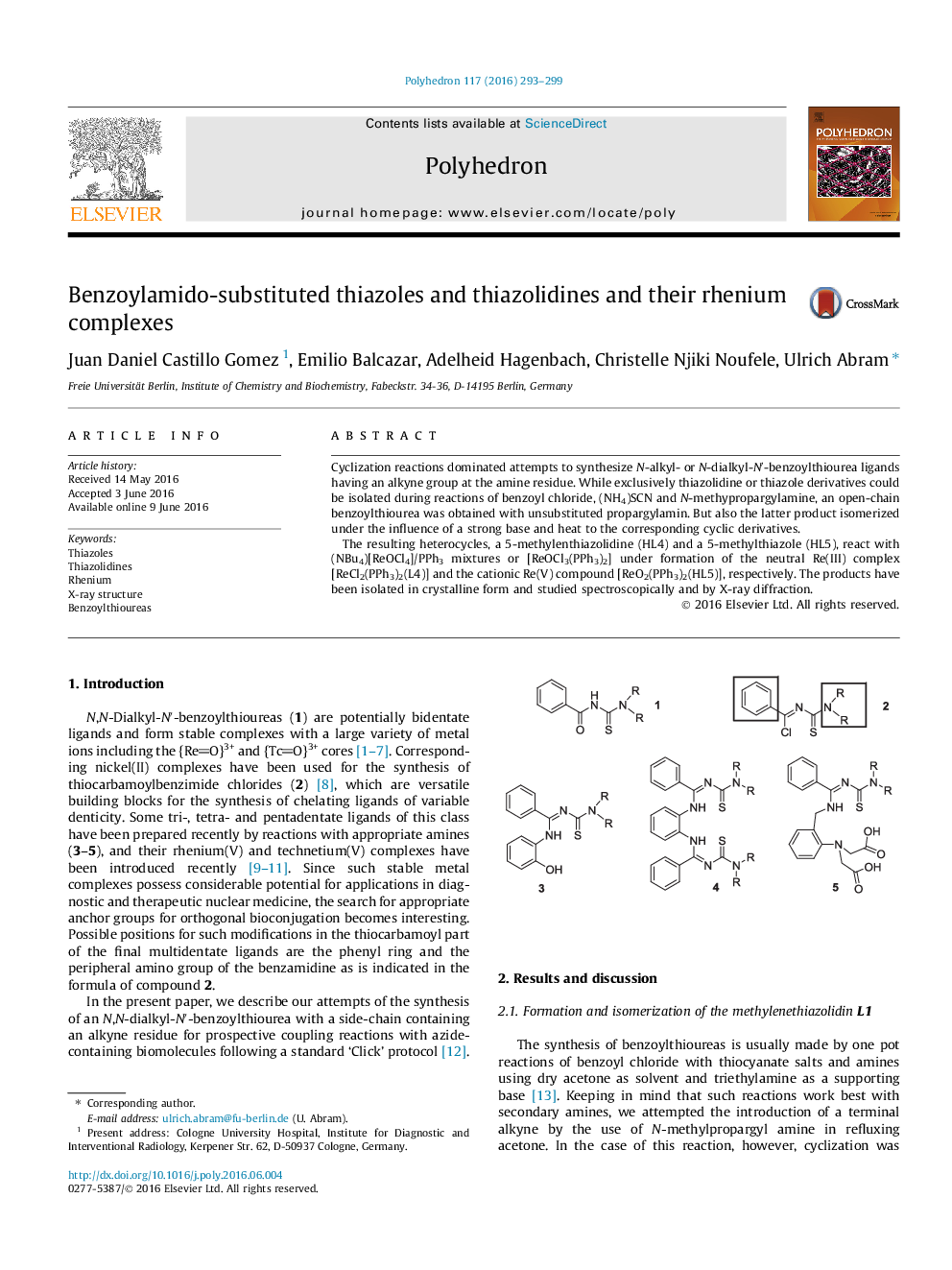| Article ID | Journal | Published Year | Pages | File Type |
|---|---|---|---|---|
| 1336209 | Polyhedron | 2016 | 7 Pages |
Cyclization reactions dominated attempts to synthesize N-alkyl- or N-dialkyl-N′-benzoylthiourea ligands having an alkyne group at the amine residue. While exclusively thiazolidine or thiazole derivatives could be isolated during reactions of benzoyl chloride, (NH4)SCN and N-methypropargylamine, an open-chain benzoylthiourea was obtained with unsubstituted propargylamin. But also the latter product isomerized under the influence of a strong base and heat to the corresponding cyclic derivatives.The resulting heterocycles, a 5-methylenthiazolidine (HL4) and a 5-methylthiazole (HL5), react with (NBu4)[ReOCl4]/PPh3 mixtures or [ReOCl3(PPh3)2] under formation of the neutral Re(III) complex [ReCl2(PPh3)2(L4)] and the cationic Re(V) compound [ReO2(PPh3)2(HL5)], respectively. The products have been isolated in crystalline form and studied spectroscopically and by X-ray diffraction.
Graphical abstractN-Propargyl-N′-benzoylthiourea undergoes a subsequent cyclization and isomerization upon treatment with KOH and heating. The formed thiazolidines and thiazoles form stable Re(III) or Re(V) complexes.Figure optionsDownload full-size imageDownload as PowerPoint slide
